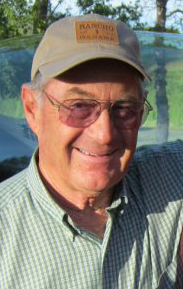Wayne Handley

Wayne Handley (born March 26, 1939, in Carmel, California) is an American airshow performer, former naval aviator, agricultural pilot, Aerobatic Competency Evaluator (ACE), and coach for upcoming and current airshow stars. Handley and his wife Karen are former residents of the Salinas Valley of California, who currently reside in Groveland, California.
Handley's father wouldn't allow him to fly while living under his roof, but in 1957, while attending Hartnell College in Salinas, Handley got in touch with the campus flying club, and took his first lesson in an
In 2015, with over 27,000 hours of flight time logged, Handley is a highly respected, record-setting aviator who received the California Agricultural Aircraft Association's Outstanding Airman Award in 1985; the International Aerobatic Club named him the California Unlimited Aerobatic Champion also in 1985, the Bill Barber Award for Showmanship in 1996, the Art Scholl Memorial Showmanship Award in 1997, the Crystal Eagle Award in 2000, and the International Council of Airshows Sword of Excellence in 2001, and induction into the International Council of Airshows Airshow Hall of Fame. In 1989, he set the world records for inverted flat spins, with 67 consecutive revolutions. In April 1999, he beat his own record, with 78 rotations flying a Giles G-202. In 1999, he also set multiple time-to-climb records in his Turbo Raven.
On the airshow circuit, he initially flew a Pitts Special biplane in an act that he called Agrobatics in which he merged some of the techniques that an agricultural pilot might employ while applying chemicals to crops with his own graceful style of aerobatic flying. He would fly under a ribbon stretched between two poles which simulated power lines; afterwards he performed an inverted cut of that ribbon using his propeller. After a few years in the Pitts, he started work on a one-of-a-kind aircraft which would be known as the Raven.

The Raven is a composite monoplane with a unique paint scheme that paid tribute to the bird species
In 1998, with sponsorship by
On January 20, 1999, Handley once again got into the record books by flying the Turbo Raven from brake release to 3,000 meters in one minute and nine seconds. In July 1999 at
Handley continues to train, coach, and evaluate aerobatic students and
Notes
